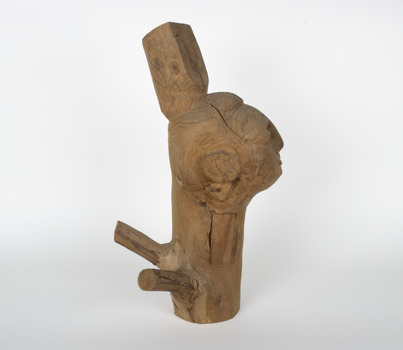Historical information
Carving of a small female head made by a patient of Mayday Hills Asylum. The sculpture as been roughly hewn from a tree limb with multiple branches.
Significance
Mayday Hills Asylum was one of the three largest psychiatric hospitals in Victoria, and played an important role in the treatment of mental health illnesses from its establishment in 1867 to its closure in 1995. As part of prescribed treatment, many patients participated in craft activities were they were able to create an array of objects.
Physical description
A limb of a tree roughly carved into the shape of a face, featuring a wide nose, protruding eyes, and flat mouth. On a limb section that extends above the head is a carving of a small totem-like face. Two small limb sections protruding from the back. Pen lines and figures on nose and ears.
















